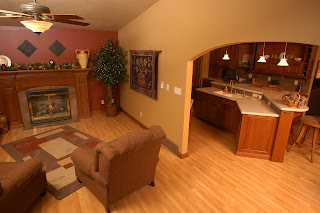Many of us grew up with pretty simple rules of thumb which dictated the ways in which we learned to decorate our homes.
Window treatments were, for the most part, traversing pinch pleated draperies, and were hung, on the window trim, at 84” off of the floor. Furniture was almost always lined up along the outside walls of a room, and everything matched.
A typical living room consisted of matching sofa, loveseat and chairs, matching end tables, and matching lamps upon those tables. Most bedrooms looked like they were created from the same mold, with a bed that matched the nightstands, that matched the dressers, and so on.
Well, times have changed! Decorating styles today revel in well-chosen variety, and the results have made our homes so much more interesting, to say nothing of being far more reflective of our individual personalities.
A major factor in this trend is the preponderance of wonderful accent furniture. Conveniently, with the addition of today’s array of unique accent pieces, you can work around many of your existing furnishings to spice up your home’s décor, and still achieve a wonderfully fresh look in your home.
Although a supporting player for years, accent furniture has recently taken the spotlight as a real star in home décor. Certainly, it still serves the purpose of providing interest in an already functional room, but more often these days designers are using accent furniture for many more of their furniture needs.
Gone are the days of the matching suite’s dominance. In fact, the prevailing consensus holds that the matching suite of furniture is a somewhat dull design option. Intriguing designs in a wide range of price points make accent furnishings the perfect choice for those homeowners seeking a change.
If you usually play it safe by having everything match, now is the time to step out of your comfort zone and dare to be eclectic. In the living room, if you have matching tables, chairs and lamps – divide and conquer.
Remove one or two of your wood tables and replace with a glass-topped, iron-based table. Add a single ottoman or a chair covered in a dramatic animal print. Eliminate one of a pair of table lamps and substitute with a stately floor lamp. If all of your upholstered furniture sports the same fabric, break the monotony by recovering one or two pieces.
When stuck with a suite of bedroom furniture, you can make a striking difference by changing the bed. Introduce a sumptuous padded headboard or an impressive iron canopy bed. Break the set of night tables and replace one with a rectangular skirted table, a round-tiered table, or a painted chest.
In your dining room, replace the two end chairs with fully upholstered ones that are of a different style and color than the side chairs. Or eliminate the breakfront and replace it with a beautifully printed buffet and a grand mirror.
Foyers are also an ideal area in which to have some fun with accent furniture. Choose a gorgeous round foyer table on which you can showcase a dramatic botanical arrangement, or a unique console table with shelves to display some treasured collectibles.










